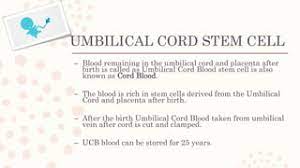Introduction
Cord blood, often discarded as medical waste, has emerged as a potent source of lifesaving potential. This unassuming substance, collected from the umbilical cord of newborns, contains a hidden treasure trove of stem cells with the remarkable ability to combat a myriad of life-threatening illnesses. In this comprehensive overview, we will explore the remarkable lifesaving power of cord blood, its medical applications, and the profound impact it has on the world of healthcare.
Cord Blood: Nature’s Hidden Gift
Cord blood is a unique and virtually limitless source of stem cells. Stem cells are the body’s building blocks, capable of transforming into different cell types, making them crucial for the body’s repair and regeneration.
Types of Cord Blood Stem Cells
Cord blood contains two primary types of stem cells:
- Hematopoietic Stem Cells (HSCs): These versatile cells can develop into various blood components, including red blood cells, white blood cells, and platelets. HSCs are pivotal in treating conditions such as leukemia, lymphoma, and inherited blood disorders.
- Mesenchymal Stem Cells (MSCs): MSCs are responsible for tissue repair and regeneration, giving hope to those suffering from conditions like spinal cord injuries, heart disease, and autoimmune disorders.
Medical Applications of Cord Blood
Cord blood has proven to be a game-changer in various medical scenarios:
- Bone Marrow Transplants: Cord blood is frequently used as an alternative to bone marrow for patients requiring hematopoietic stem cell transplants, especially when a suitable bone marrow donor is unavailable.
- Regenerative Medicine: MSCs from cord blood are at the forefront of regenerative medicine, offering potential treatments for conditions such as Parkinson’s disease, diabetes, and joint injuries.
- Clinical Trials: Ongoing research explores the use of cord blood stem cells in clinical trials for a multitude of conditions, including cerebral palsy, autism, and multiple sclerosis.
- Future Horizons: As science and technology advance, the potential applications of cord blood stem cells continue to expand, with promising prospects for treating neurodegenerative diseases, heart conditions, and autoimmune disorders.
Cord Blood Banking: Preserving the Lifeline
To harness the lifesaving power of cord blood, many families choose to bank it. Cord blood can be stored in either public or private banks. Public banks make it available to anyone in need, while private banks reserve it exclusively for the donor’s family. Cord blood banking ensures that these powerful stem cells are readily accessible when required for life-saving treatments.
Conclusion
Cord blood is a medical marvel, proving that the gift of life-saving potential can be found at the very beginning of life. The story of cord blood is one of hope, possibility, and advancement in medicine. As research and clinical trials continue to unlock the full spectrum of its capabilities, cord blood’s significance in healthcare grows ever stronger. It’s a reminder that even the smallest things, like the cord that ties a newborn to its mother, can hold immeasurable power to save lives and redefine the future of medicine.
